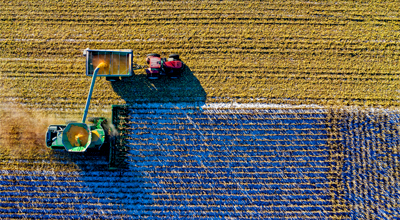
Image: Pixabay
According to data reported by the Institute, the adjustment in projections was mainly motivated by the reduction in productivity estimates and production of important crops (such as corn), due to adverse climate impacts from the occurrence of a more severe La Niña phenomenon. this harvest, and the worsening scenario for cattle production. In the added value of vegetable production in 2021, the researchers revised the increase from 2.7% to 1.7%. Even so, the positive performance was supported by increases in the production of soybeans (+9.8%), wheat (+36.0%) and rice (+4.1%). This offset the estimated declines for other crops: corn (-11.3%), sugar cane (-3.2%) and coffee (-21.0%). Corn yield in 2021, in particular, was greatly affected by the delay in the soybean harvest, which delayed the planting of the second crop, making it dependent on late rains that did not occur.
In animal production, the forecast for an increase was revised from 2.5% to 1.8%, with growth for all segments, with the exception of cattle production, with a drop of 1.0%. There is an expectation of positive performance in the production of other proteins: pigs (+7.7%), chicken (+3.9%), milk (+3.1%) and eggs (+4.5%). In the case of pigs, the good performance is related to the strong growth in exports to China this year.
{module Form RD}
The forecast for 2022 was made based on the first information made available by Conab for the plant production segments and forecasts from the Ipea Situation Group for animal production. Ipea researchers estimate a growth of 3.3% in the sector's GDP, with growth of 3.9% in plant production and 1.8% in animal production. According to Conab, there is an expectation that the good performance of soybean production will continue, which is expected to break a new record in 2022, and a good recovery of crops such as corn and cotton, after the sharp drop projected for this year. Furthermore, cattle slaughter should finally recover after two consecutive years of decline. The main risks of the growth projection published by Ipea are related to climate effects on vegetable production and the delay in the resumption of cattle slaughter. However, climate models point to a milder La Niña phenomenon in the second half of the year, with more regular rains in summer crops and milder temperatures in winter.
By: Aline Merladete | agrolink














